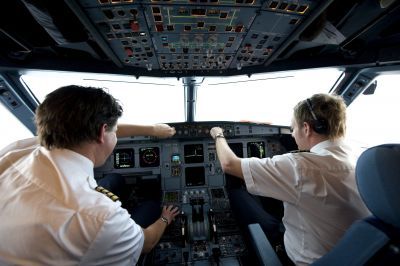Greener landings in climate-aware Sweden

Your support helps us to tell the story
From reproductive rights to climate change to Big Tech, The Independent is on the ground when the story is developing. Whether it's investigating the financials of Elon Musk's pro-Trump PAC or producing our latest documentary, 'The A Word', which shines a light on the American women fighting for reproductive rights, we know how important it is to parse out the facts from the messaging.
At such a critical moment in US history, we need reporters on the ground. Your donation allows us to keep sending journalists to speak to both sides of the story.
The Independent is trusted by Americans across the entire political spectrum. And unlike many other quality news outlets, we choose not to lock Americans out of our reporting and analysis with paywalls. We believe quality journalism should be available to everyone, paid for by those who can afford it.
Your support makes all the difference.At 9,000 metres, the pilot idles the engines and begins gliding the Airbus toward Stockholm's Arlanda Airport in a fuel-slashing "green landing".
By pulling back the engines, pilot Henrik Ekstrand is saving his charter company, Novair, 300 litres (66 gallons) of fuel - cutting costs and carbon emissions in an industry under financial and environmental pressure.
His flight is also an experiment in a new innovation to combine idling with a curved approach to the runway that shortens distance and landing time - another environmental saving that takes green landings to a new level.
Novair pilots have carried out 10 of these flights over Sweden in the past months in a combination that is a first for Europe.
Environmentally conscious Sweden is a pioneer in greener flying with the Scandinavian airline SAS carrying out its first fuel-saving landings in 2006 and Arlanda Airport pushing other airlines to follow the trend.
Using less fuel by idling the engines, the landing approach is less expensive, less noisy and emits less carbon dioxide than the conventional way of bringing planes to the runway. But it also takes longer.
The aim is "to fly slower, especially on the descent, which means a long time idling," says SAS pilot Ulf Martinsson.
The longer duration is an issue tackled with the innovation used by Novair that shortens landing time with a satellite-guided approach in a downward curve.
The new approach shortens flight distance by up to 32 kilometres (20 miles) and also trumps traditional gas-guzzling landings by three or four minutes.
"It's the beginning of an evolution from a system based on rules to a system based on efficiency," says Lars Lindberg, head of Swedish aerospace company Avtech that developed the technique.
Although impossible in poor visibility, it also fixes an accurate touchdown time and passengers offer good reports.
"It's very quiet, we can really hear the noise difference. It's very comfortable, less jerky," said Mathias Klarowski, a 23-year-old German aeronautics student at Stockholm University on board the Novair test flight.
The cash-strapped airline industry is under pressure to reduce fuel consumption as well as carbon emissions which are blamed for global warming that could herald rising sea levels and other environmental disasters.
The industry is responsible for two percent of the carbon dioxide emitted worldwide and up to three percent of emissions linked to climate change, according to the UN-backed Intergovernmental Panel on Climate Change.
It's a weighty issue that will be debated by world leaders at December 7-18 climate talks in Copenhagen.
Ahead of the summit, members of the airline industry group IATA pledged in October to improve fuel efficiency by 1.5 percent a year until 2020, and called on governments worldwide to provide incentives to speed biofuel development.
Representatives from the International Air Transport Association, which represents the world's largest airlines, also agreed to reduce carbon emissions by 50 percent from 2005 levels by 2050.
There have been more than 2,000 green landings into Stockholm's Arlanda Airport since the first in January 2006, with SAS carrying out the lion's share.
About 17 other carriers, including Air France, Nav Portugal, TAP Portugal, Icelandair and Iberia are also exploring new ways to save fuel and reduce emissions, says SESAR, which coordinates European airspace.
Arlanda is meanwhile hoping that by 2012 around 80 percent of its arrivals will be on green landings.
Join our commenting forum
Join thought-provoking conversations, follow other Independent readers and see their replies
Comments